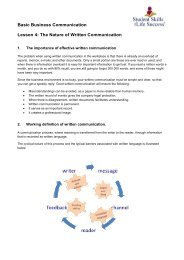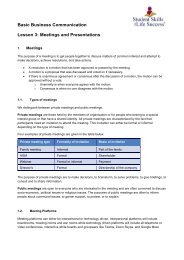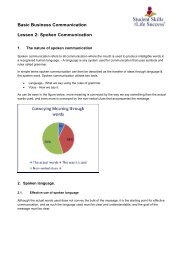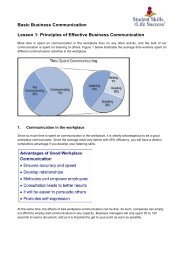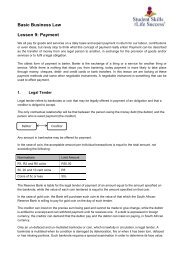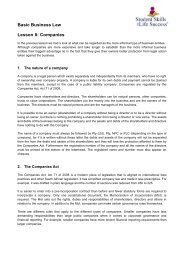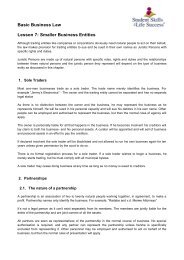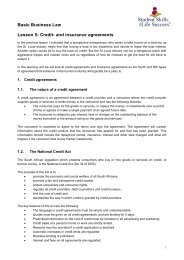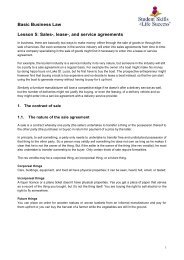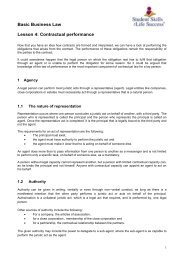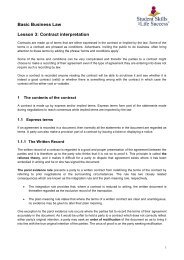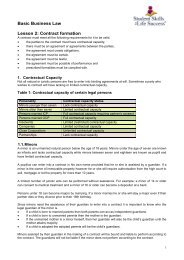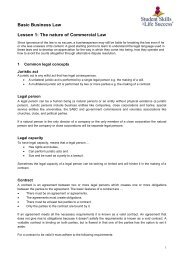Purchasing and Financing 2024
Purchasing- and Financial Management For 2nd year CATS learners. Aligned to the outcomes of the German accredited certification: “Industrie Kaufmann/frau”.
Purchasing- and Financial Management
For 2nd year CATS learners.
Aligned to the outcomes of the German accredited certification: “Industrie Kaufmann/frau”.
You also want an ePaper? Increase the reach of your titles
YUMPU automatically turns print PDFs into web optimized ePapers that Google loves.
Investors are either expecting an increase in future earnings or are paying too much for<br />
the stock.<br />
2. Debt Equity Ratio = Debt/Owner's Equity<br />
The Debt Equity Ratio is one of the most widely used Financial Ratios. It indicates how<br />
much of the company is financed by debt, the higher the ratio, the higher the debt.<br />
Generally, ratios of higher than 1 indicate more risk in financing assets. As with any<br />
Financial Ratio, owners <strong>and</strong> investors compare the ratio to the industry average <strong>and</strong> the<br />
competition.<br />
3. Interest Coverage Ratio (Income Statement) = Operating Income/Interest Expense<br />
The Interest Coverage Ratio measures the ability of a firm to meet its interest payments.<br />
The larger the ratio, the more likely the firm can meet its payments.<br />
The ratio divides Operating Income (income before interest <strong>and</strong> taxes) by interest<br />
expense.<br />
Analysts typically require minimum ratios of four to qualify for strong credit ratings.<br />
The Software Industry generally has very high profit margins <strong>and</strong> low debt, creating very<br />
high coverage ratios. The retail industry, on the other h<strong>and</strong>, has lower profit margins than<br />
software, resulting in less Operating Income to cover interest expenses.<br />
4. Leverage Ratio = Assets/Owner's Equity<br />
The higher this ratio is, the higher the debt. Generally, ratios of higher than 15 are a<br />
warning signal, while low ratios may indicate underutilized assets. It is a h<strong>and</strong>y tool<br />
because it captures all liabilities regardless of where they are listed.<br />
The company either owns an asset (Assets = Owner's Equity) or financed part or all of it<br />
(Assets - Liabilities = Owner's Equity).<br />
For example, if the owner invests $50,000 to start a business in cash, the ratio = 1, as 50<br />
000/50 000 = 1. If the company then purchases machinery for $500,000 on loan, the<br />
Leverage Ratio becomes 11, as 550,000/50,000 = 11. If the business owns $50,000 of the<br />
total assets of $550,000, the total debt must equal 500,000.<br />
To add relevance to this number, compare the ratio with competitors <strong>and</strong> industry<br />
averages. For example, capital-intensive industries like auto manufacturers have much<br />
higher ratios, while the software industry, which requires much less capital investment,<br />
has lower debt ratios.<br />
45




